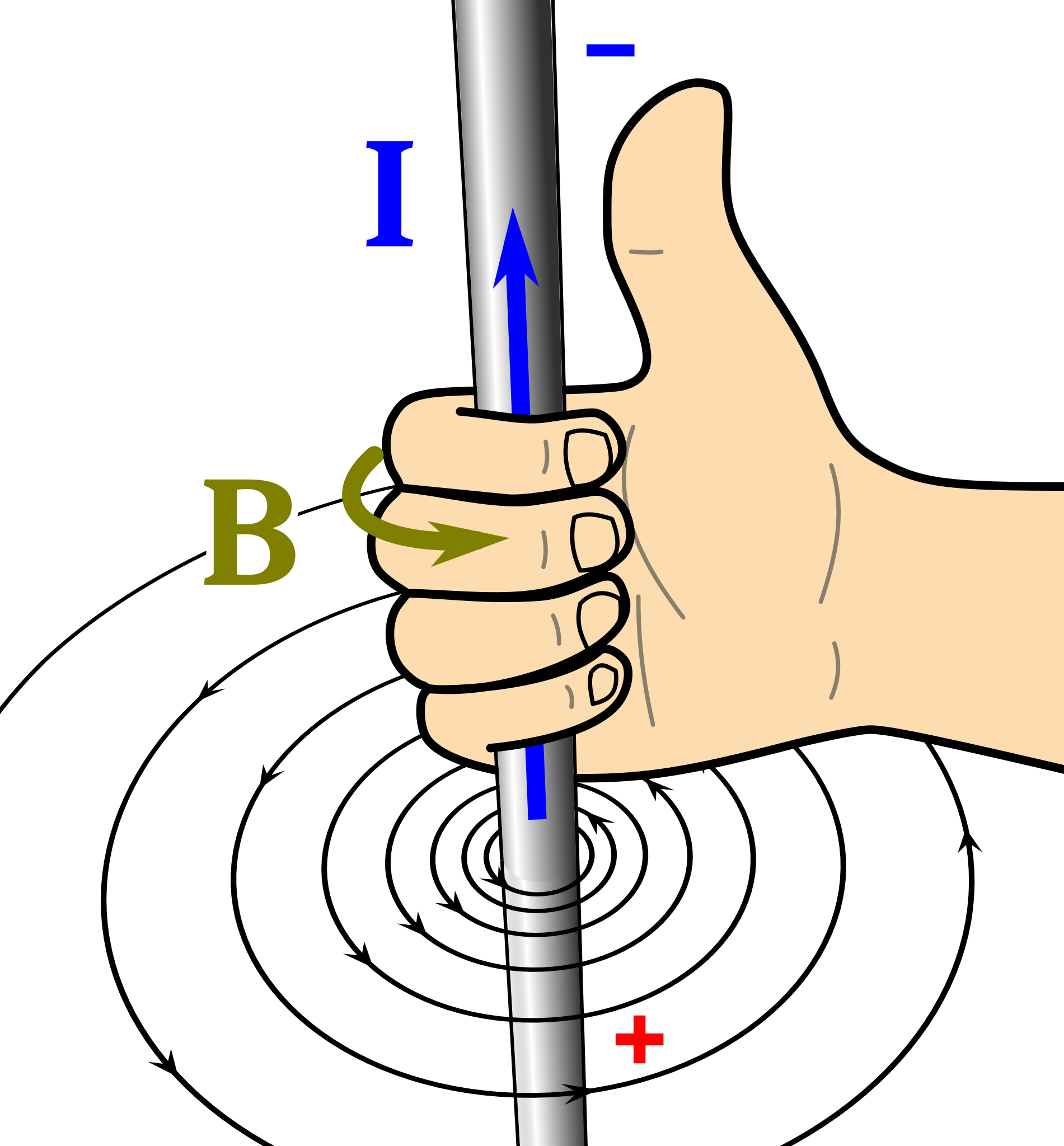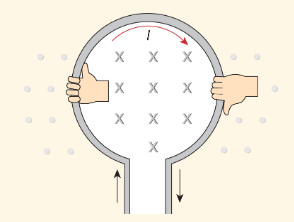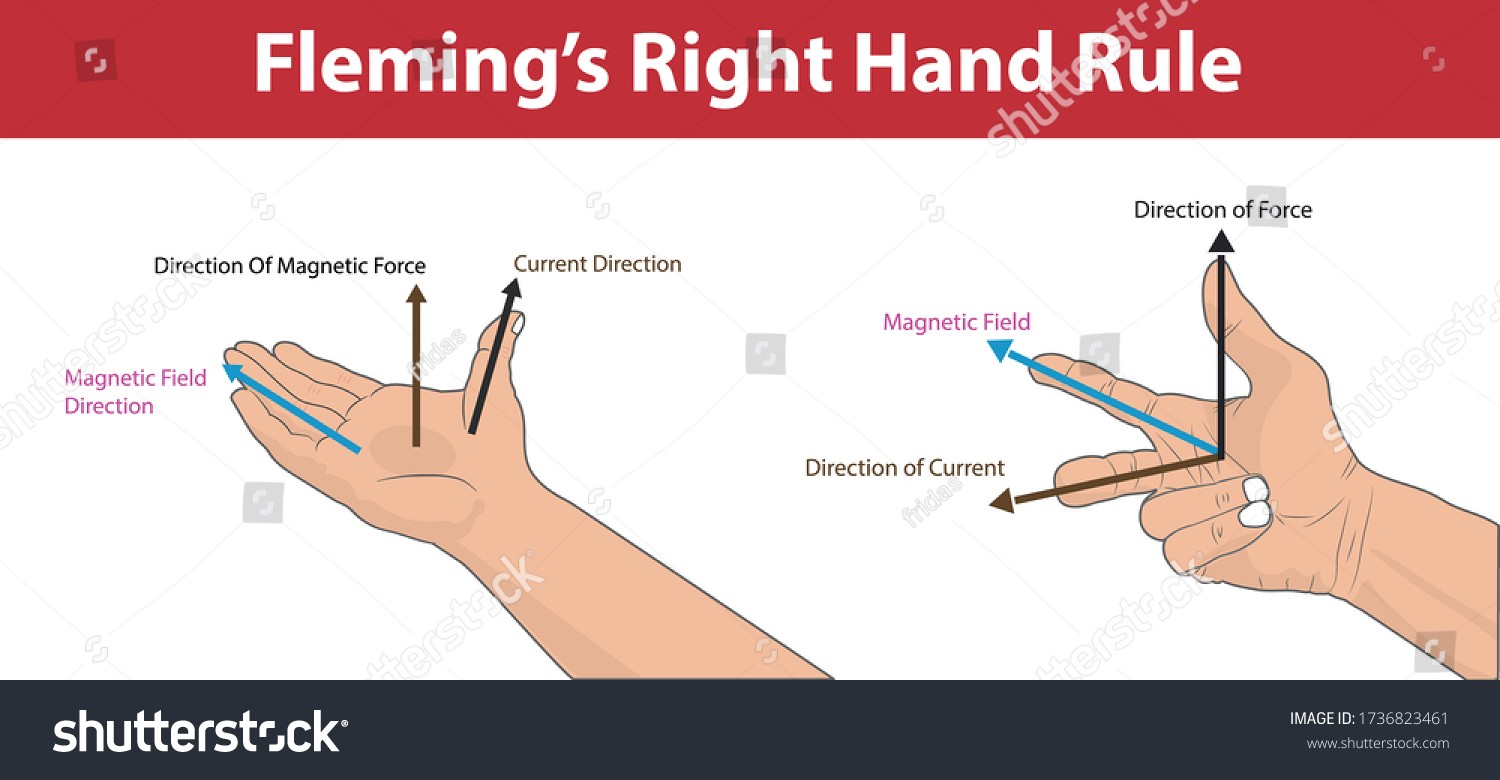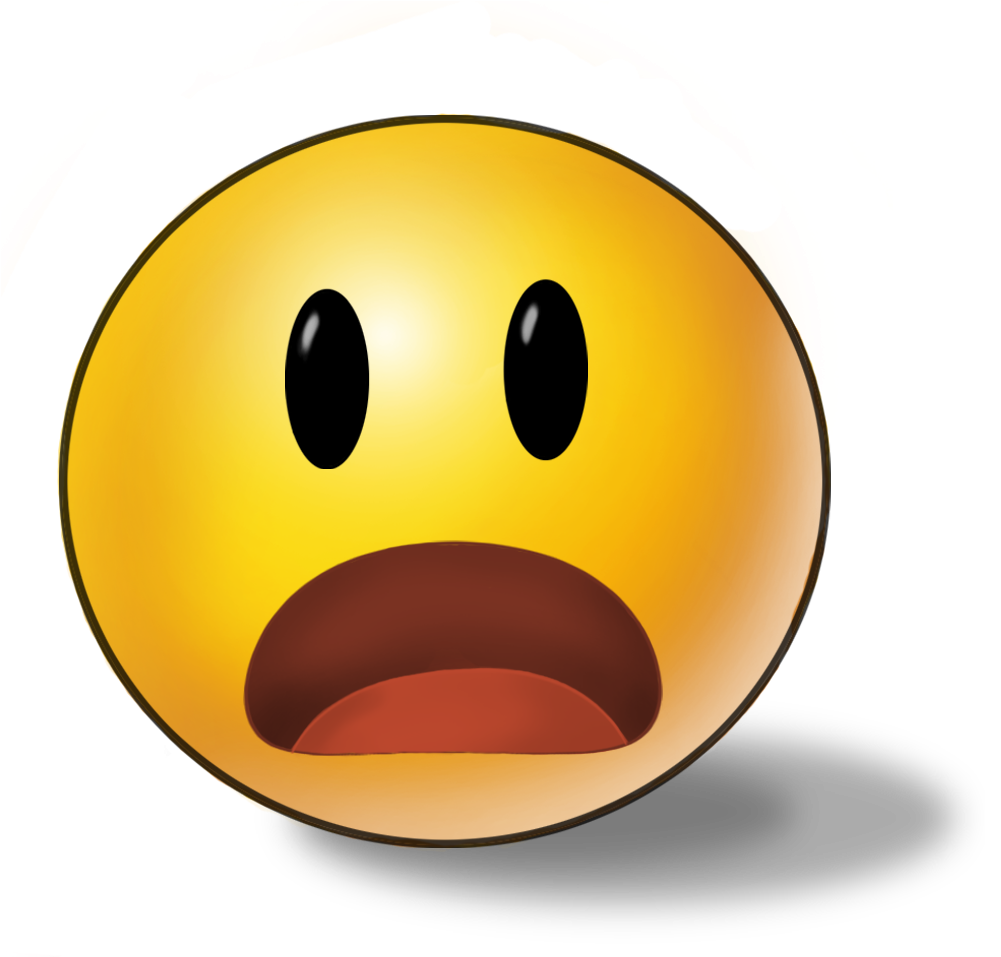-
Magnetic field
A magnetic field is a vector field that describes the magnetic influence on moving electric charges, electric currents, and magnetic materials.
-
SI unit for magnetic field strength (with symbol and base units)

tesla (T)
-
The size of the tesla unit is quite large, so small magnetic fields are sometimes measured in _____.
gauss (G)
-
Gauss to tesla conversion
1 T = 104 gauss
-
_____ creates a magnetic field.
Any moving charge
-
All materials can be classified as _____, _____, or _____.
diamagnetic, paramagnetic, or ferromagnetic
-
Diamagnetic materials (with examples)
Diamagnetic materials are made of atoms with no unpaired electrons and that have no net magnetic field. These materials are slightly repelled by a magnet and so can be called weakly antimagnetic.
Diamagnetic materials include common materials that you wouldn’t expect to get stuck to a magnet: wood, plastics, water, glass, and skin, just to name a few.
-
The atoms of both paramagnetic and ferromagnetic materials have _____, so these atoms do have a _____.
unpaired electrons
net magnetic dipole moment
-
Paramagnetic materials (with examples)
Paramagnetic materials will become weakly magnetized in the presence of an external magnetic field, aligning the magnetic dipoles of the material with the external field. Upon removal of the external field, the thermal energy of the individual atoms will cause the individual magnetic dipoles to reorient randomly.
Some paramagnetic materials include aluminum, copper, and gold.
-
Ferromagnetic materials (with examples)
Ferromagnetic materials, like paramagnetic materials, have unpaired electrons and permanent atomic magnetic dipoles that are normally oriented randomly so that the material has no net magnetic dipole. However, unlike paramagnetic materials, ferromagnetic materials will become strongly magnetized when exposed to a magnetic field or under certain temperatures.
Common ferromagnetic materials include iron, nickel, and cobalt.
-
If two bar magnets are allowed to interact, opposite poles will _____ each other, while like poles will _____ each other.
attract
repel
-
A collection of moving charges, in the form of a current through a conductive wire, would produce _____.
a magnetic field in its vicinity
-
Magnetic field of an infinitely long and straight current-carrying wire (equation)

B is the magnetic field at a distance r from the wire
µ0 is the permeability of free space
I is the current
-
Straight wires create magnetic fields in the shape of _____.
concentric rings
-
To determine the direction of the magnetic field vectors, use a _____.

right-hand rule
Point your thumb in the direction of the current and wrap your fingers around the current-carrying wire. Your fingers then mimic the circular field lines, curling around the wire.
-
Magnetic field in the center of a current-carrying loop (equation)

Note: field at the center of a circular loop of current-carrying wire with radius r, not at a distance r away from the loop
-
Direction of the magnetic field vector in a circular loop of wire carrying a clockwise current

Into the plane of the paper (feathers)
-
Permittivity of free space value (with units)

-
Magnetic fields exert forces only on _____.
other moving charges
-
Lorentz force
Note that charges often have both electrostatic and magnetic forces acting on them at the same time; the sum of these electrostatic and magnetic forces is known as the Lorentz force.
-
In our discussion of the magnetic force on moving charges and on current-carrying wires, we will assume the presence of a _____ and _____ external magnetic field.
fixed and uniform
-
Magnetic force
When a charge moves in a magnetic field, a magnetic force may be exerted on it.
-
Magnetic force equation
FB = qvB sinθ
q is the charge
v is the magnitude of its velocity
B is the magnitude of the magnetic field
θ is the smallest angle between the velocity vector v and the magnetic field vector B
-
The magnetic force is a function of the sine of the angle, which means that the charge must have a _____ in order to experience a magnetic force. If the charge is moving parallel or antiparallel to the magnetic field vector, it will experience _____.
perpendicular component of velocity
no magnetic force
-
To determine the direction of the magnetic force on a moving charge, use a _____.

right-hand rule
To determine the direction of the magnetic force on a moving charge, first position your right thumb in the direction of the velocity vector. Then, put your fingers in the direction of the magnetic field lines. Your palm will point in the direction of the force vector for a positive charge, whereas the back of your hand will point in the direction of the force vector for a negative charge.
-
MNEMONIC: Parts of the right-hand rule for magnetic force
Thumb—velocity (indicates direction of movement, like a hitchhiker’s thumb)
Fingers—field lines (fingers are parallel like the uniform magnetic field lines)
Palm—force on a positive charge (you might give a “high five” to a positive person)
Back of hand—force on a negative charge (you might give a backhand to a negative person)
-
A current-carrying wire placed in a magnetic field may also ...
... experience a magnetic force.
-
The magnitude of the force created by an external magnetic field for a straight wire (equation)
FB = ILB sinθ
I is the current
L is the length of the wire in the field
B is the magnitude of the magnetic field
θ is the angle between L and B
-
The same _____ can be used for a current-carrying wire in a field as for a moving point charge; just remember that current is considered the flow of _____.
right-hand rule
positive charge

